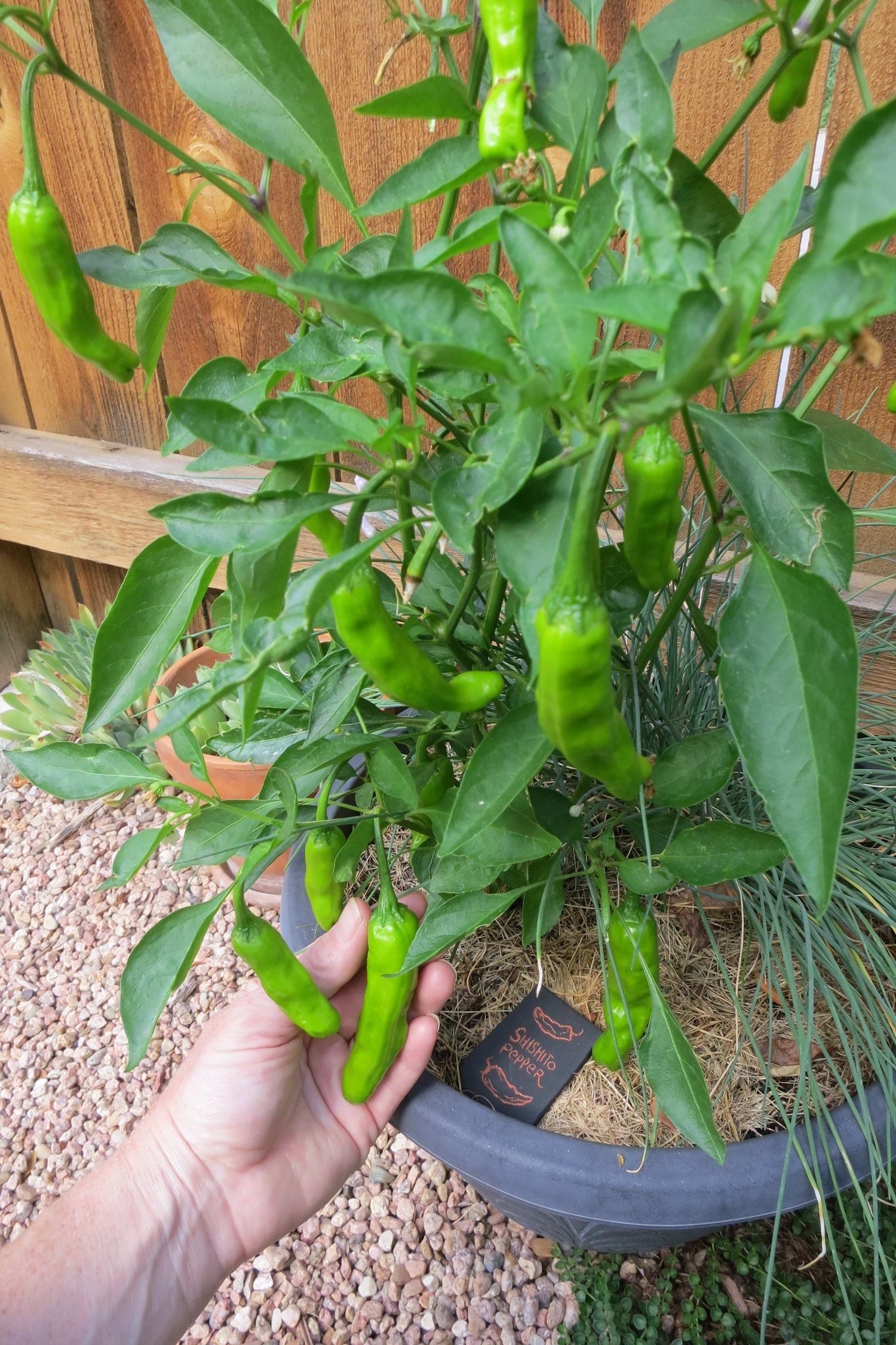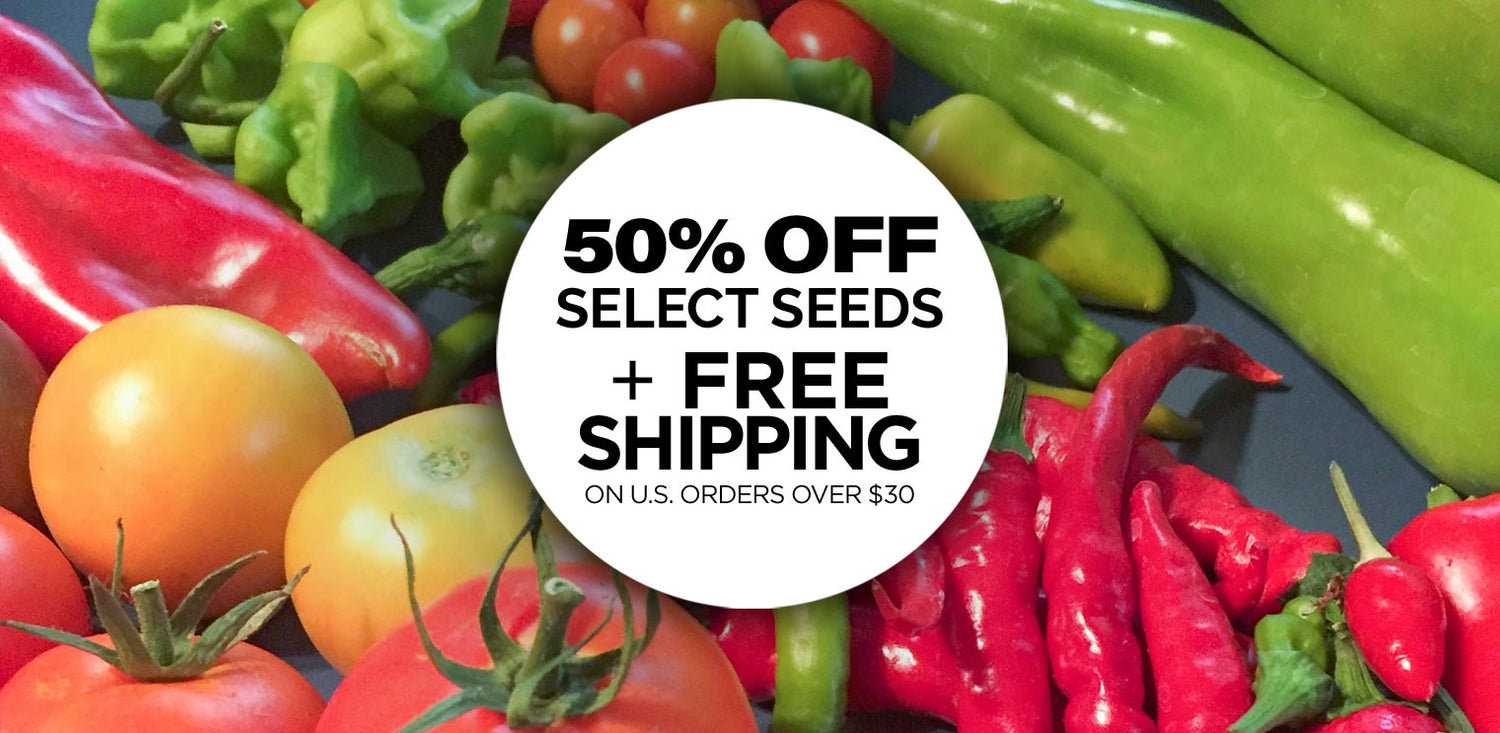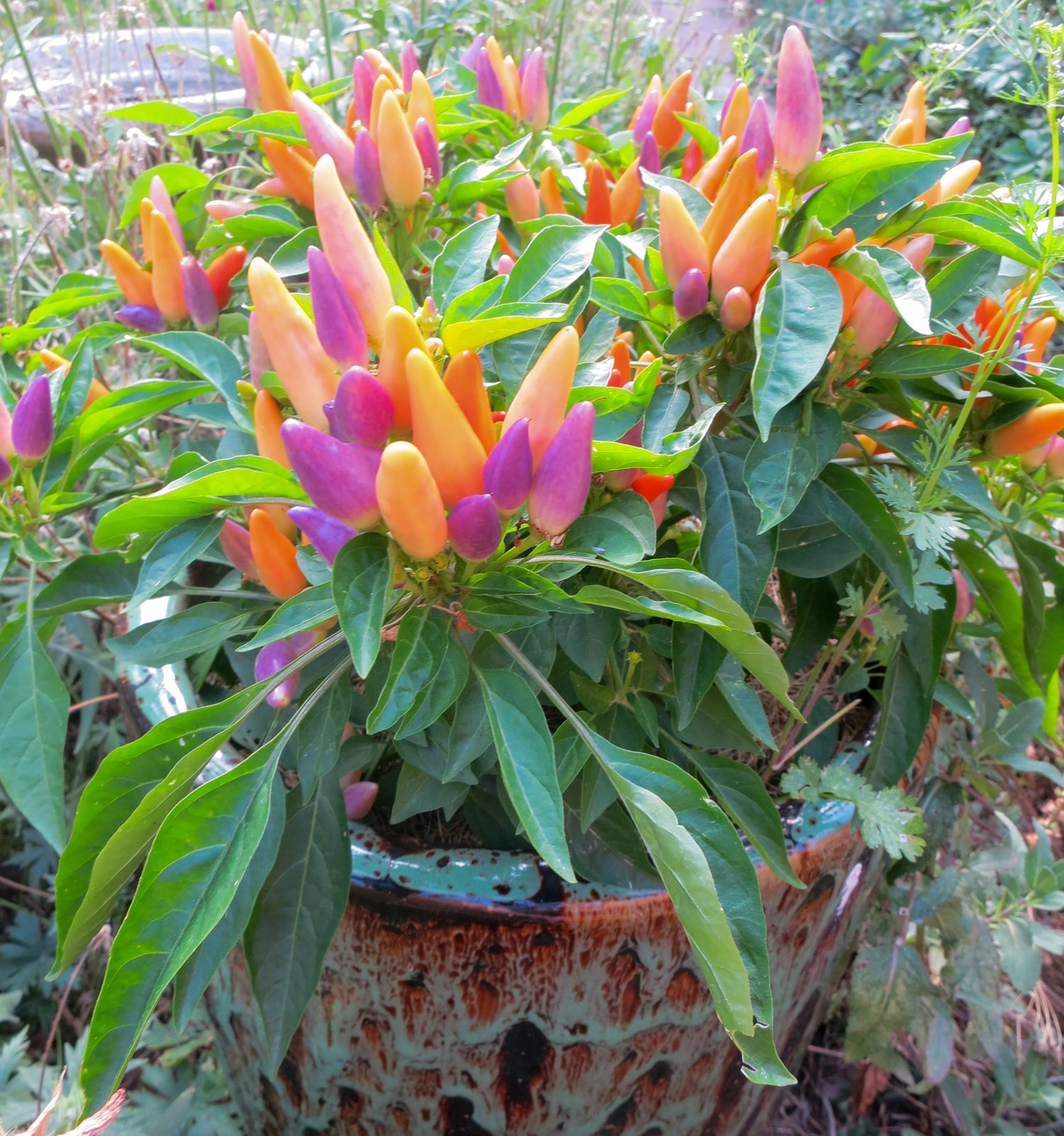
To grow Chiltepin Peppers, you need a long growing season – as they take 120 days+ to start producing. But once going, a Chiltepin plant can live for over 35 years if not subjected to a hard frost! Since Chiltepin /Tepin pepper plants are hard to find, as most nurseries sell Pequin Peppers, starting Chiltepins from seed is a great option! Chiltepin seeds are easy to grow, but are a little finicky when it comes to germinating, so make sure to keep them nice and warm at 80-90˚ F to give them the best chance at sprouting.

Chiletepins are small and round little peppers, while pequins are slightly larger and have more of an elongated oval shape and are pointed at the end. Pequin plants can also grow taller (up to 4 feet) than Chiltepin plants (36" tall). Pequin chilies are also said have a slightly milder heat, but they are still super hot with 100,000 Scovilles. Both of these plants are almost-berry like to harvest, but unlike sweet berries, these pack a lot of heat!
In early spring, start Chiltepin pepper seeds indoors 8 weeks prior to warm nightly temperatures. Place the seeds in sterile media and cover 1/4” deep. Provide 85°F bottom heat, bright light and keep moist at all times. Seeds will germinate in 7 - 21 days. Transplant seedlings into pots and grow until there are 6 true leaves on the plant. Plant them directly into rich soil, 30” apart or into large 5 gallon containers. These Chiltepin pepper plants thrive in partial shade, so they don't mind getting shade from a shrub or tree for part of the day. Harvest the chiltepin peppers when they are red.

Chiltepin Salsa Recipe
~or~
1 Large (28oz) can Organic Whole Tomatoes
1/2 Cup - Fresh Cilantro leaves (use as much as you'd like)
2+ Chiltepin Peppers (fresh or dried)
1/2 Onion (diced, soak in cold water 20+ minutes to sweeten)
1-2 Garlic Cloves
Fresh Lime Juice (1 lime)
1 Teaspoon of Sugar or Honey (optional)
Teaspoon of Cumin & Chile Powder to your taste
Salt & Pepper
Process the Chiltepin Peppers and all the other ingredients (excluding onions) in a food processor. After soaking the onions, drain them and add right at end and blend for just a second so the onions stay chunky. Put in the fridge for an hour+ for flavors & spice to develop. Enjoy with chips or on tacos/burritos you name it.

Drying Chiltepin Peppers
You can dry these chiltepin peppers whole by removing the stems and spreading them out on sheets. If you have a dry climate, you can attempt to sun dry them in the open air. However, if it is humid they could rot if they don't dry quickly enough, so you may want to use a dehydrator or put them in the over at the lowest temperature ( 135-140 degrees F is ideal for drying). Once dried, you can store Chiltepin Peppers in glass jars somewhere dark and use in salsas and other recipes when you want to spice things up!





















